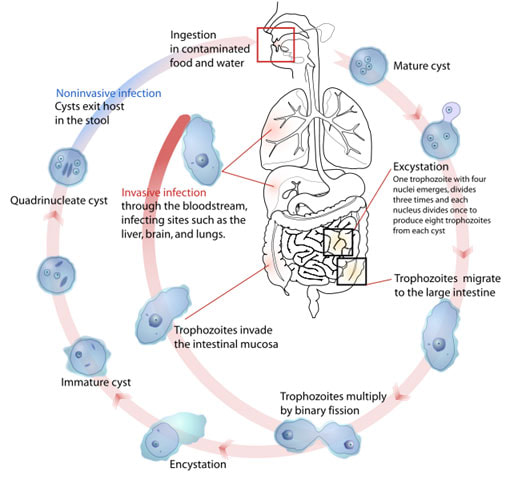|
Amebic Dysentery
Amebic dysentery may present with symptoms such as tenesmus, abdominal cramps, stool containing mucus and stool containing blood as well as flatulence. The severe cases of amebic dysentery may present with hepatic abscess. Amebic dysentery may be caused by entamoeba histolytica a form of ameba. There are two forms of ameba which include cyst and trophozoite. The cyst is metabolically inactive and resistant to any change in the environment.The cyst is the active form of ameba which is upon ingestion may lead to excystation and result in formation of trophozoite. Trophozoite ( the active form of ameba) will continue to divide and finally infect the large intestine. This will finally lead to flask shaped ulceration due to destruction of the tissue. The common mode of transmission may include oral anal or fecal oral routes. The infected individual may shed the cyst in the stool. The stool may contaminate the water and food. Entamoeba histolytica can be detected by microscopic examination of the stool which may reveal the present four nuclei cyst and ingested erythrocytes. Patient is advised for proper sanitation and personal hygiene. The treatment for amebic dysentery may include metronidazole, iodoquinol and diloxanide furoate.
0 Comments
Leave a Reply. |
Kembara's Health SolutionsDiscovering the world of health and medicine. Archives
June 2023
Categories
All
|


 RSS Feed
RSS Feed